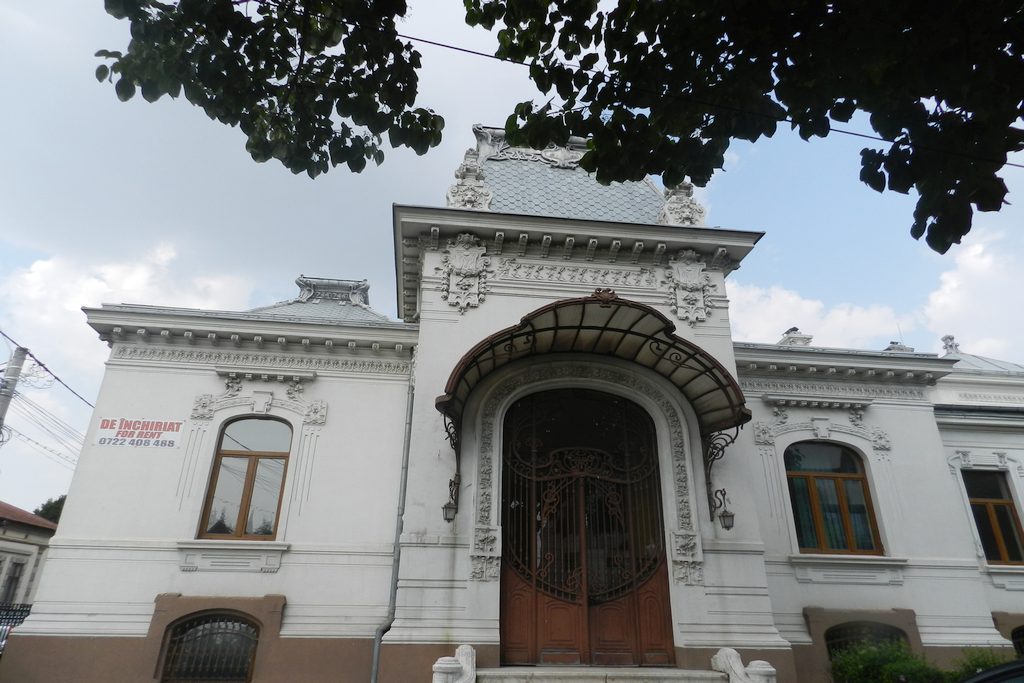

The house in built in the year 1898, the architect being Dimitrie Maimarolu, born on the 21st of August 1859 at Bucharest.
After a preparation in the workshop of the professor Julien Guadet (1834 – 1908), in August 1881 he enters at the School of Beaux – Arts from Paris, obtaining the Architect Diploma in 1885 and obtaining the right of practicing in Romania. Later on, he is named architect in the Ministry of Interns, where he will work until February 1892. In 1897 he is advanced, becoming chief – architect.
Between 1886 – 1887 the architect Maimarolu is looking after the Commune Palace from Tecuci, becoming today the Culture house. On the 23rd of May 1898 he is commanded the project of the Professional girls’ school 1 from Bucharest.
At Pitești he builds up between 1898 – 1899 the Prefecture of the county Argeș, today the County Museum of Natural History. In 1901 he is the inspector of the final works of the Commune palace from Târgu Jiu, today the Prefecture of the county Gorj.
Craiova from today is situated on the ruins of the former Getae – Dacian establishment, Pelendava, dating back in the period 400 – 350 b. Chr. The construction is mentioned on the Tabula Peutingeriana, the Roman map commanded by the Emperor Caracalla and finalized during the times of Severus Alexander in the year 225. The evolution of Craiova, on whose territory the human constructions had a permanent continuity, there takes place in the context of the general development of Wallachia in the centuries XIV – XV. Craiova also affirms itself in the Anti – Ottoman resistance fight from the centuries XIV – XV, near Craiova being considered the fact that there are the famous Revine, the swamps from Lunca Jiului, where there took place the great battles ended with the victory of the Romanians led by Mircea I of Wallachia.
At the end of the XVth century Craiova was a burg, extended on the surface of the property of the powerful aristocrats Craiovești which owned over 100 villages, being a real economical power and without whose alliance the princes in power could be kept. Appeared in the last decades of the XVth century, the Great Bănie of Craiova became in a relative short time a second political institution of the country, as importance, after the reign.
During the times of Michael the Brave, Craiova knew a powerful development, the contemporary records presenting the city as an important political and military center.
Craiova was in the Middle Ages also a center with an important military and strategic role. In 1795, a plague epidemics cut down hundred of human lives, and in 1796 the fire devastated more districts. The serious damages were brought to the city by the Turkish bands from Vidin, which occupied Craiova in 1806.
In 1848, in the days of the Revolution, at Craiova appeared the newspaper the “National”.
One of the great families of aristocrats from Craiova – the Bibescu family – gave to Wallachia the last two princes: the brothers Gheorghe Dimitrie Bibescu (1842 – 1848) and Barbu Dimitrie Știrbei (1849 – 1856).
In the proximity of the Union, Craiova numbered approximately 25000 inhabitants, being situated from this point of view, immediately after the capital of Wallachia.
Craiova got involved in the Independence War (1877 – 1878). Craiova is situated in the center of an area directly affected by the Anti – Ottoman war. By the end of the XIXth century, Craiova – with the over 40000 inhabitants – is aiming towards a capitalist development in the industrial, commercial and real – estate domains.
Craiova was the first city of the country alimented with electric current on the basis of engines with internal combustion.
